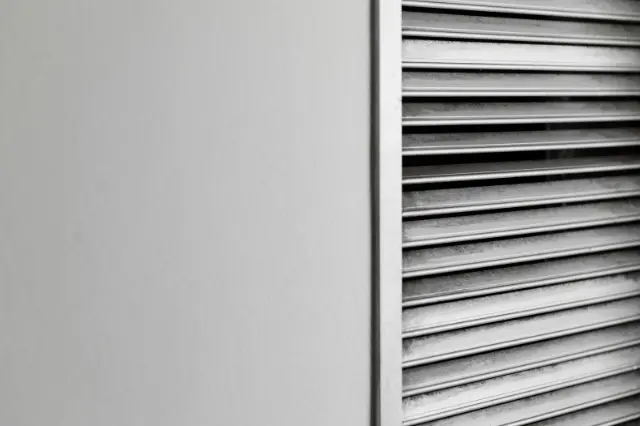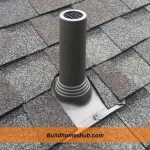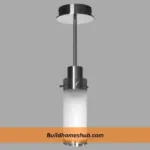During winter, homeowners often face the challenge of optimizing their heating systems to ensure a warm and comfortable environment. A key aspect of this is determining the best way to manage the vents in your home. The position and condition of these vents play a crucial role in how effectively your heating system distributes warmth.
While the general rule is to keep vents open, there are nuances depending on the location and usage of different rooms. Understanding these subtleties can lead to a cozier home and more efficient energy use and potentially lower heating costs.
Which Way Should Vents Be in Winter?
It’s best to keep all your home’s vents open and unobstructed during winter. This ensures efficient circulation of warm air throughout the house. In rooms that are used less frequently, you can slightly close the vents to redirect more heat to areas that need it most.
However, completely closing vents can disrupt the overall airflow and potentially strain your heating system. Ensure that vents near windows are not blocked and that windows are well-insulated to prevent heat loss. Keep vents open in basements to avoid freezing pipes and help warm the floors above.
Here’s a more detailed description of how vents should be in several parts of the house:
1. Vents in Living Areas
In primary living spaces such as living rooms and bedrooms, it’s crucial to keep the vents open and free from obstructions. These areas are the most frequently utilized in a home, and open vents ensure a steady flow of heated air, maintaining a uniform and pleasant temperature. Blocked or closed vents can lead to cold spots or uneven heating, which can be uncomfortable.
Open vents help efficiently distribute heat, reducing the strain on the heating system. This approach not only enhances comfort but also contributes to the overall energy efficiency of your heating system, ensuring that these communal spaces remain cozy and welcoming during the cold months.
2. Vents in Closed Rooms
Part partially closing the vents can be beneficial in rarely used or closed-off rooms, such as guest bedrooms or storage areas. This technique redirects more heated air to the more frequently used areas of the house, enhancing heating efficiency. Doing so prevents you from wasting heat on unoccupied spaces, potentially leading to cost savings on your heating bill.
However, it’s important to avoid completely closing these vents, as some air circulation is necessary to prevent issues like dampness or mold. By partially closing the vents, you balance maintaining a healthy environment and optimizing the heat distribution in your home.
3. Vents in Bathrooms
Bathrooms require special consideration when it comes to vent management in winter. It’s advisable to keep bathroom vents open. Bathrooms typically need more heat due to the moisture present, which can make the air feel colder. Open vents ensure that warm air circulates effectively, providing comfort especially after showers or baths.
Also, proper ventilation is crucial in bathrooms to prevent the growth of mold and mildew, which thrive in moist environments. Keeping the vents open aids in reducing humidity levels and maintaining a healthy and comfortable bathroom environment, all while ensuring that the space is adequately warmed.
4. Vents in High Ceiling Rooms
Rooms with high ceilings present a unique challenge in heating. Heat naturally rises, leading to warmer upper levels and colder lower levels in such spaces. To counteract this, using ceiling fans set on a low speed to push warm air downwards is effective. This method helps in redistributing the warm air that gathers at the ceiling back down into the living space.
Combine this with slightly opened vents to allow for efficient circulation of warm air. This strategy ensures that the entire room, from floor to ceiling, maintains a more consistent and comfortable temperature, making these grand spaces more enjoyable during winter.
5. Vents Near Windows
When heating vents are situated close to windows, it’s crucial to ensure that the windows are properly insulated. Windows are common areas for heat loss, especially if they’re old or poorly sealed. Without good insulation, the warm air from the vents can easily escape outside, reducing the efficiency of your heating system and leading to higher energy bills.
Effective insulation, like double-glazing, weather stripping, or even heavy curtains, can dramatically reduce this heat loss. By keeping the warm air inside, you maintain a comfortable room temperature and optimize your heating system’s performance, ensuring that the energy used to heat your home is utilized effectively and economically.
6. Basement Vents
Keeping basement vents open during winter is essential for several reasons. Firstly, basements are prone to becoming exceedingly cold, which can be problematic, especially if pipes and water lines run through them. Cold temperatures can cause pipes to freeze and potentially burst, leading to significant damage and costly repairs. Keeping the vents open keeps the basement warmer, reducing the risk of freezing pipes.
Also, as heat naturally rises, warming the basement contributes to heating the floors above, enhancing overall home comfort. This approach prevents potential damage in the basement and contributes to a more evenly heated and comfortable living space in the entire house.
Conclusion
The management of vents in winter is a simple yet significant aspect of maintaining a comfortable and efficient home. By keeping vents open, ensuring they are unobstructed, and adjusting them based on room usage, you can optimize the distribution of warm air. This results in a balanced heating system that caters to the specific needs of each area in your home. Remember, the goal is not just to generate heat, but to use it effectively.
I like to think I can help you with all the information you need on home renovations and DIY tips. You should subscribe.











